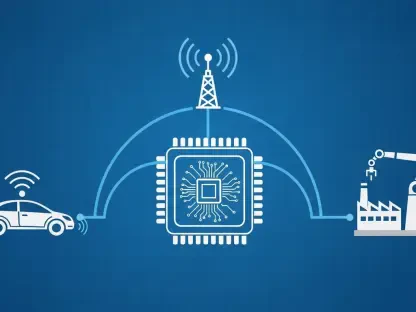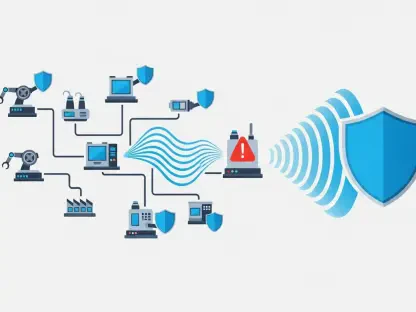I’m thrilled to sit down with Vladislav Zaimov, a seasoned telecommunications specialist whose deep expertise in enterprise telecom and risk management of vulnerable networks offers a unique perspective on the evolving landscape of private 5G. With Industry 4.0 reshaping industrial environments, Vladislav provides invaluable insights into how private wireless networks are driving digital transformation. In our conversation, we explore the significance of private 5G for industrial applications, the explosive growth of this technology, its adoption across global markets, and the specific industries leading the charge. We also delve into the challenges and opportunities that lie ahead in this dynamic field.
Can you walk us through what private 5G means in the context of Industry 4.0, and how it stands apart from the public 5G networks most of us are familiar with?
Absolutely, Andrew. Private 5G refers to dedicated cellular networks built for specific organizations, often within a confined area like a factory or campus, tailored to their unique needs. In the context of Industry 4.0, which is all about smart, connected industrial systems, private 5G acts as the backbone for real-time data transfer, automation, and machine-to-machine communication. Unlike public 5G, which serves a broad consumer base through mobile operators, private 5G is controlled by the enterprise itself, offering enhanced security, lower latency, and customizable performance. This makes it ideal for industrial settings where reliability and data privacy are non-negotiable.
What’s fueling the remarkable 40% revenue growth for private 4G and 5G systems in 2024, as reported in recent industry data?
The growth is driven by a perfect storm of factors. First, industries are increasingly recognizing the value of digital transformation—there’s a pressing need for robust, high-speed connectivity to support automation and IoT devices. Second, the limitations of traditional Wi-Fi, like interference and coverage gaps, are pushing companies toward private cellular solutions. Additionally, government initiatives and spectrum allocations for private networks have made deployment more accessible. It’s a response to the demand for operational efficiency, especially in sectors where downtime can cost millions.
Beyond China, where are we seeing private 5G adoption picking up, and what’s enabling this global spread?
While China has been a frontrunner due to its massive industrial base and early policy support, we’re now seeing significant traction in regions like North America, Europe, and parts of Asia-Pacific. Countries like Germany, with its strong manufacturing sector, and the U.S., with investments in logistics and energy, are accelerating adoption. Key enablers include regulatory frameworks that allocate spectrum for private use, as well as growing partnerships between telecom vendors and industrial firms. The global push for Industry 4.0 practices is also a big motivator—companies everywhere want to stay competitive.
The shift from traditional enterprise settings to industrial applications for private 5G seems significant. Can you explain what this transition looks like in practice?
Certainly. Initially, private 5G was often deployed in enterprise settings for basic connectivity—think office campuses or retail environments needing secure, high-speed networks. Now, the focus has pivoted to industrial applications where the stakes are higher. We’re talking about environments like factories or mines, where private 5G supports critical operations—real-time monitoring of machinery, autonomous vehicles, or worker safety systems using camera analytics. This shift reflects a deeper integration into operational technology, where the network directly impacts production and efficiency, not just communication.
Industries like manufacturing, logistics, mining, and energy are highlighted as key adopters of private 5G. What makes this technology so appealing to these sectors?
These industries operate in complex, often harsh environments where traditional connectivity solutions fall short. Private 5G offers ultra-reliable, low-latency communication, which is crucial for applications like remote-controlled machinery in mining or automated warehousing in logistics. For instance, in manufacturing, private 5G enables real-time data collection from sensors on the production line, allowing instant adjustments to prevent defects. It also addresses unique challenges like ensuring safety in remote energy sites or managing vast logistics networks, where other technologies might struggle with coverage or security.
With major players like Huawei, Nokia, and Ericsson leading the private 5G market, what gives these established companies an edge over smaller competitors?
These companies have a head start due to their decades of experience in telecom infrastructure, especially in building and scaling radio access networks for public use. They’ve got the technical know-how, global supply chains, and established relationships with enterprises and regulators. Their ability to integrate private 5G with existing systems, provide end-to-end solutions, and meet the stringent performance demands of industrial applications sets them apart. Smaller players often lack the resources or track record to compete at that level, especially in highly specialized industrial deployments.
Looking ahead, what’s your forecast for the future of private 5G in the context of Industry 4.0 over the next five to ten years?
I’m optimistic about private 5G becoming a cornerstone of Industry 4.0. Over the next decade, I expect adoption to grow exponentially as costs decrease and more spectrum becomes available for private use. We’ll likely see deeper integration with technologies like industrial IoT and AI, enabling even smarter, more autonomous systems. Industries will move beyond pilot projects to full-scale deployments, especially as standards solidify and interoperability improves. However, challenges like cybersecurity and skill gaps will need addressing. Overall, private 5G will redefine how industrial environments operate, making them more efficient, safe, and adaptable to future demands.









